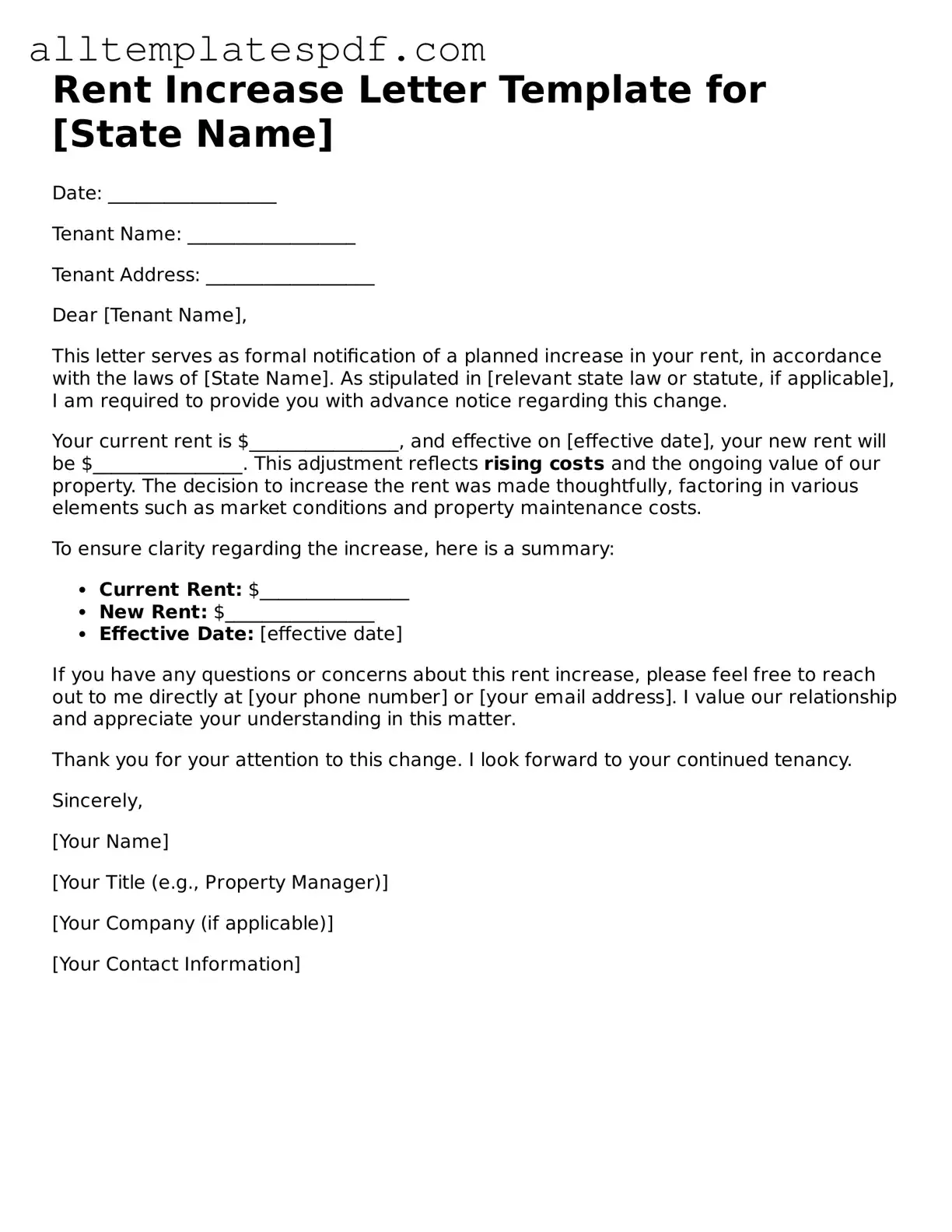Attorney-Approved Rent Increase Letter Template
A Rent Increase Letter is a formal document used by landlords to notify tenants of an impending increase in rent. This letter outlines the new rental amount, the effective date of the increase, and any relevant details pertaining to the lease agreement. Understanding how to properly fill out this form is essential for both landlords and tenants to ensure compliance with local laws and regulations.
Ready to take the next step? Fill out the Rent Increase Letter form by clicking the button below.
Open Editor
